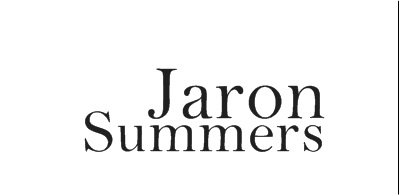From Brad to Bard
Dear Professor Ben,
Welcome to the heady ranks of the very very successful Hollywood writer.
I am delighted you have finally achieved a (some say the) plateau where you grasp that you must focus on the type of brad employed in binding a screenplay.
Some writers go to their graves unaware that the right brad is far more essential than learning to type or having an agent.
I always invite the unproven writer to click on: BRADS.
At the above sites, great minds will find over 600 references concerning the use and practice of the brad in our profession.
After perusing these sites, I think you will agree that, hands down, brads are more central in the making of a Hollywood epic than cast, director or act structure.
Brads are more crucial than financing. Simply put, brads are the Holy Grail of screenplay success.
Shakespeare and Dickens ignored the brad and although they were able to develop some story sense, neither was able to write a successful screenplay.
The same fate befell William Tyndale, although he managed to translate ancient Greek and Hebrew writings into what is now the King James version (1611) of the Bible.
(This book is no longer used in Hollywood. It was bound incorrectly. Had the publisher used the proper brads that book may have still been in circulation in Southern California.)
The correct length of the brad’s stem is 2.25 inches. The brads must be solid brass with round heads.
All respectable Hollywood screenplays have three holes punched along the left margin. Only the top and bottom holes should be used for brads. The middle hole is always left unbraded. Virginal.
You may wonder, in a world of Gucci and Google, why all proper screenplays are submitted with only two brass-plated fasteners, the stems of which are exactly 2.25 inches in length.
It’s quite simple. When a producer receives your screenplay, he first checks the brads. When the brad on a screenplay of 103 pages is bent over, its tail is the width of his or her small fingernail.
(This is ten times the size of a producer’s heart, a hundred times the size of an agent’s brain and one millionth the size of the average palimony settlement.)
If your tail is the wrong length that means your screenplay has the wrong page count. The producer immediately hurls your screenplay and his boiling latte into the face of an intern, then fires everyone within screaming distance.
Tail has become an integral part of Hollywood jargon. For example, a producer might say, “I read your screenplay and it’s a piece of s**t, doesn’t have the right tail in it. Now f**k off.”
All screenplays are know as “pieces of s**t” prior to production. And the term “f**k off” has replaced air kissing in Hollywood.
Both are part of the nomenclature of the wonderful world of entertainment and everyone happily exchanges this banter. But to be told his or her work does not have the correct tail has driven sixty-seven scribes to suicide this year.
If your screenplay has the correct tail, the next hurdle is quality content.
To determine the quality of your screenplay, the producer scans the first three pages and if he thinks your work is worthy, he unbends the tails and removes your brads. This allows him to extract your title page.
That title page has the name of your screenplay and your name.
When the producer has removed the cover page with your name from your screenplay, he rebrads your work and is free to submit the screenplay to various studios without going through the time consuming and costly process of optioning it.
Before rebrading, the producer often directs an intern, with third degree facial scars, to Xerox fifty “office” copies of your work.
Since successful producers must repeat the above exercise dozens of times a week, they favor screenplays with two instead of three brads because the first format is simpler to disassemble and assemble. The center hole always remains virginal. (It is the only thing in Hollywood above the age of 11 that features the V quality.)
Any form of binding other than brass brads is death for you as a writer. Only the brad makes your screenplay instantly accessible to Hollywood. And that brad must have the correct tail.
Often, after a long day a producer might say something like, “I’m home from the studio, Honey. Get me a drink and take off your clothes — I spent another afternoon without finding any decent tail.”
If you work hard and pay your dues, eventually the glorious instant may come when a studio desires to transform your piece of s**t into a film.
A studio executive, having read your screenplay but having no idea of who you are, must contact your producer since your producer is the only link to you.
Having secured a buyer for your work, your producer will keep this information from you, but will option your material for a dime on the dollar. Unless, of course, you are destitute. In that event, the producer will end up with your life’s work for a penny on the dollar.
Later today, your mailman will deliver a special delivery parcel containing several proper brads so that we can explore in greater depth and understanding this pivotal area of our craft.
Your colleague,
Jaron Summers
Click one of the above to see some of my work.
You can buy one of my novels here. If you
can't afford it, write me a funny
note and I'll send you a PDF
of the novel.
Rather than beg one million people to donate a dollar each, I'd like one billionaire (or two or even three) to simply give me a million buck$. You know who you are.



